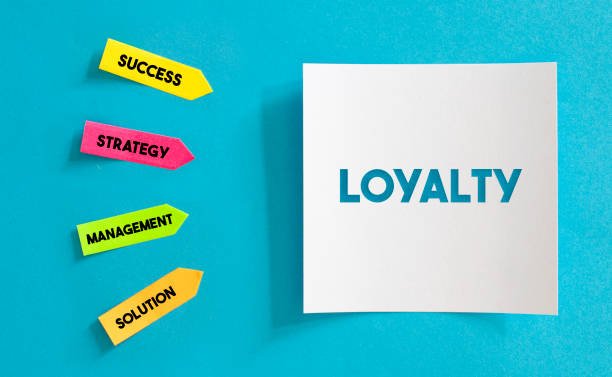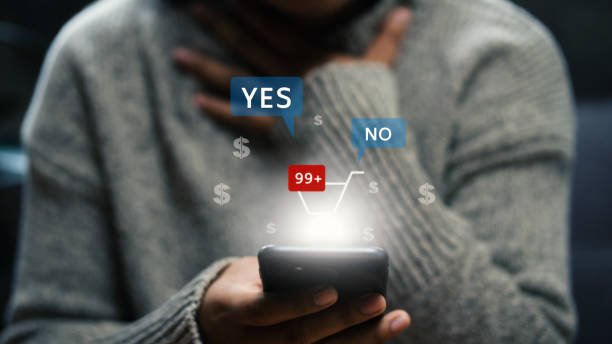In digital commerce, most brands focus on what they say.
But the strongest ones know that real growth comes from what they hear.
From customer reviews to DMs — from Shopify chatbots to TikTok comment replies…
Listening isn’t passive.
It’s predictive selling.
Because real profit doesn’t come from pushing product — it comes from emotional alignment , curiosity , and responding before customers ask.
In this guide, we’ll explore:
- Why customer presence beats performance
- How to build sales through soft engagement
- Real-world examples from DTC to dropshipping
- And what psychology says about how people respond to warmth
Let’s dive into Feedback Loops That Drive Profit: Listening Is Selling — and discover why sometimes, the strongest message isn’t sent at all…
It’s received.
The Emotional Science Behind Soft Sales: Why Presence Works Better Than Push
We assume that urgency wins hearts — but research shows otherwise.
According to MIT Sloan Review , over 60% of repeat buyers return not because of price — but because of emotional alignment.
That means:
A product page might look polished…
But if your brand voice feels off — no one buys.
While a line like
“Still smiling from our last interaction — wanted to keep things warm.”
Can replay in someone’s mind for days.
Because real conversion builds best behind curiosity , not clarity.
And sometimes, the strongest move in digital interaction…
Is noticing what she didn’t say — before you reply.
5 Types of Feedback That Reveal Hidden Revenue (If You’re Paying Attention)
Here’s how to read between lines — and earn more than just trust.
| Signal | What It Might Mean |
|---|---|
| She watches your story twice — then sends a voice note | Curious, not casual |
| He replies instantly — but only with an emoji | Interested — but guarded |
| She waits 24 hours — then sends a long message | Thoughtful engagement |
| Your product page gets high time-on-page but low conversion | Trust-building phase |
| Your DM gets read — but no reply for hours | Processing internally |
These aren’t just engagement signals — they’re profit indicators .
So instead of asking “Did she see it?”…
Ask:
“Did she linger — or leave fast?”
Because in modern retail…
Tone beats tension. Silence speaks before sound.
Real-Life Examples: When Brands Listened — Then Sold More
Let’s look at real cases where quiet insight turned into loud revenue.
The Skincare Brand That Built Trust Through Engagement Signals
They used Shopify Magic to track:
- Time spent on each product page
- Scroll depth
- Mouse hover heatmaps
Instead of pushing ads, they personalized follow-ups based on observed behavior.
Result?
- Higher retention
- Warmer replies
- Increased average order value
💡 Why It Worked: They led with respect — not pressure.
Their message matched her rhythm — and made her feel seen.
The Influencer Who Noticed Her Audience — Then Changed Everything
She launched a new hoodie — but ignored historical trends.
Assumed high views = high conversion.
Reality?
- High bounce rate
- Low return rate
- No follow-up engagement
She realized:
“I wasn’t listening — I was chasing numbers.”
Then changed strategy.
Used AI tools to monitor:
- Voice notes
- Comment sentiment
- Retention patterns
Which helped her tailor future drops to include emotionally resonant language — not just visuals.
Result?
- Lower churn
- Higher anticipation
- Repeat buyers who felt heard
💡 Lesson Learned: Growth without listening leads to loss — not legacy.
The Store That Used Scalper Bots — Then Lost Control
An apparel brand automated inventory release through bots — thinking it would help manage demand.
But scalper bots bought everything — and resold at inflated prices.
Customers felt cheated — and stopped returning.
Why It Backfired: Growth without fairness leads to distrust — not revenue.
How to Build Messaging That Lands With Emotional Intelligence
Want your words to build trust — not tension?
Here’s how to craft polite, emotionally intelligent messages that stick — both online and offline.
1. Lead With Lightness — Then Let Emotion Lan
Instead of aggressive CTAs like: “Buy now — only 3 left!”
Try: “Still smiling from our last drop — wanted to share something rare.”
One feels robotic.
The other invites curiosity.
Because in digital commerce…
Tone beats urgency. Presence beats performance.
2. Use Humor That Disarms Tension
Playfulness reduces stress — and makes transparency feel less formal.
Good Examples:
✅ “I promise to stop trying so hard to impress — after this message.”
Avoid sarcasm that feels sharp — keep it light, not lazy.
Because real charm doesn’t need edge to land well.
3. Acknowledge Viewer Boundaries Before Testing Them
Some people need space to process. Others thrive on directness.
So instead of chasing, try pausing.
Example: “Now I’m going to give you space — but wanted to keep things warm.”
This shows control — and builds comfort.
4. Don’t Force Deeper Topics Too Soon
Even if you’re building real rapport — avoid diving into complex logistics early.
Save those for later — once trust builds.
Because real emotional depth begins with lightness — not weight.
People navigating multiple conversations often respond better to light, steady energy — not dramatic declarations.
5. Keep Tone Warm — Not Overly Formal
Avoid lines like: “What are you really looking for?”
Stick to: “Your presence makes me rethink what chemistry feels like.”
“I think my phone cracked when I saw your address. Worth it.”
One creates pressure.
The other builds presence.
And that’s exactly what modern shoppers crave.
Frequently Asked Questions (FAQ)
Q: Do women notice subtle flirty messages?
A: Absolutely — especially when they match her energy and avoid pressure.
Q: Should I use AI to write my openers?
A: Only if you personalize them afterward — AI can suggest, but only you can match emotion.
Q: What if she ignores my message?
A: Don’t panic — give her time. Silence doesn’t always mean disinterest.
Q: Can I flirt without sounding desperate?
A: Definitely — focus on warmth over urgency.
Q: Is it okay to mention that I noticed her energy?
A: Yes — and often preferred over appearance-based comments.
Final Thoughts
Flirting has never been about volume — it’s always been about presence .
And now, thanks to the power of digital communication…
The best messages aren’t shouted — they’re whispered through feedback.
So next time you send a message or launch a campaign…
Don’t just ask:
“Did she read it?”
Ask:
“Did she smile — or skip?”
Because the most attractive thing you can do…
Isn’t always a flirty line.
It’s a sentence that makes someone feel safe enough to reply — even when they weren’t expecting it.
And sometimes, that’s all it takes to turn quiet admiration into real connection — and profit.










